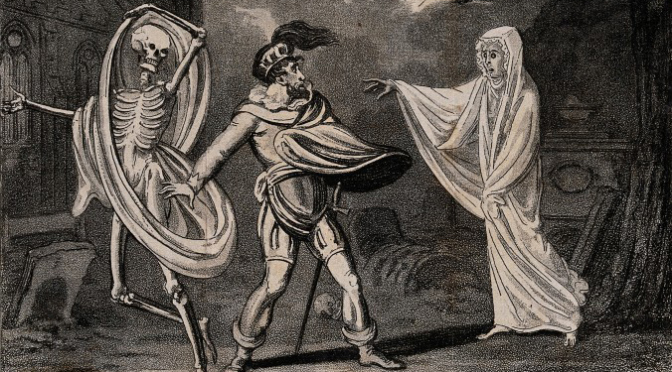The Gothic Literary Movement
/Article by The Gothic Librarian
Most goths are surprisingly unfamiliar with the literary genre that lent its name to our modern subculture. Sure, you may have read Dracula and Frankenstein in school, but these books were actually late-comers to the movement and hardly representative of the genre. So, what exactly is Gothic literature, and how did it get its start? It all began with a British politician named Horace Walpole…
Horace Walpole is credited with not only inventing the Gothic literary genre, but also with kicking off the neo-Gothic architectural revival in Europe—two movements that were deeply intertwined. A respected art historian, man of letters, and member of Parliament, Walpole built himself a grand estate in Twickenham, which he dubbed Strawberry Hill House. Despite its cheery name, the estate is a fortress, with turrets and battlements modeled off of medieval castles and other elements borrowed from abbeys and cathedrals. It was in these impressive halls that Walpole composed his most famous work, The Castle of Otranto.
Published in 1764, The Castle of Otranto initially tried to pass itself off as a recently discovered medieval manuscript. But with its second edition, the book acknowledged being of recent creation and was subtitled "A Gothic Story," thus giving a name to the genre it would soon inspire. The story revolves around a young noblewoman named Isabella. On the eve of her wedding, a mysterious giant helmet falls from the sky and crushes her groom-to-be. In the aftermath of this catastrophic supernatural event, Manfred, the Lord of the Otranto, tries to take Isabella for his own bride and she escapes the castle through a trap door and secret passageways. Other supernatural events ensue, ancient prophecies are brought to light, and long-dead spirits demand justice. As the very first Gothic novel, The Castle of Otranto establishes many of the genre's core themes and tropes, including spooky castles, family secrets, lustful villains, and virtuous female victims.
Over the next several decades, many authors followed in Walpole's footsteps. One of the most influential of these was Ann Radcliffe. Radcliffe published half a dozen wildly popular Gothic novels at the end of the 18th century, including The Romance of the Forest (1791) and The Mysteries of Udolpho (1794). She believed strongly in the value of psychological "terror" over shock-and-gore "horror" and often provided rational explanations for the seemingly supernatural occurrences in her novels. Her fame brought a slew of close imitators, especially among women writers who had found themselves a new niche. These Radcliffean-style Gothic novels became their own subgenre, known as the Female Gothic. On the other end of the spectrum, stylistically, were writers like Matthew Lewis, whose lurid tale of evil temptresses, corrupt clergymen, and defiled victims in The Monk (1796) capitalized on shock and violence.
As the Gothic novel developed further throughout the 19th century, it became associated with names you're more likely to have run across in English class: Mary Shelley, Robert Louis Stevenson, Charlotte Brontë, Bram Stoker, etc. This era also saw new genres evolve out of the Gothic as authors like Edgar Allan Poe revolutionized horror and Wilkie Collins honed the mystery novel. Today, the influence of the Gothic has splintered into many different, nearly unrecognizable genres. Whether you prefer slashers, psychological thrillers, cozy mysteries, or paranormal romance, you can thank the Gothic novel for many of the books we read today.
If you want to learn more about Gothic literature, check out www.TheGothicLibrary.com. This book blog for dark-minded readers hosts weekly blog posts that range from discussions of Gothic tropes and literary classics to reviews of recently published novels in any of the darker genres. You can also find the blog on Twitter (@Gothic_Library) and Facebook (www.facebook.com/thegothiclibrary/).



